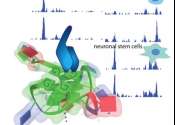DNA design brings predictability to polymer gels
Scientists in Japan have made a tuneable, elastic and temperature-sensitive gel by using complementary DNA strands to connect star-shaped polymer molecules together. The gel, and the method used to develop it, could lead ...









